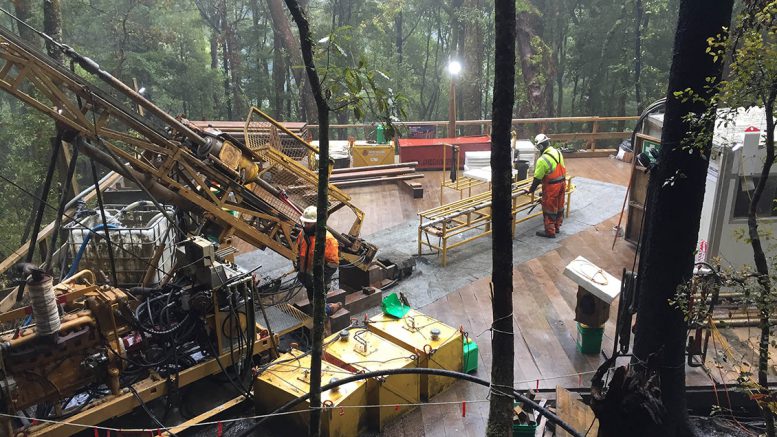The election of a new Prime Minister late last year was a geopolitical shift in New Zealand. The new government introduced a fast-track approvals bill for infrastructure and mining projects that will reduce permitting from two years to six months.
It’s a move that could spark another New Zealand gold rush, which was historically bigger than the California gold rush, producing 40 million ounces.
Prospectors are now eyeing the country as the world’s next modern mining jurisdiction – known for exceptionally high-grade gold – as the gold price rallies to historic highs.
The fast-track approval bill had its first reading in March and facilitates delivery of infrastructure for resource development projects.
“No-one should underestimate the appetite our government has for seeing an increase of economic activity in mining,” Resources Minister Shane Jones said at the time.
The minister pointed to New Zealand’s rich mineral endowment, which he likened to “veins of wealth,” running through the north and south islands.
A recent nationally significant find while exploring the Bendigo goldfield in Central Otago confirmed four deposits of 2.9 million oz. of gold – worth a staggering $9.5 billion, The Press reported.
“With this legislation, mining will be turbo-charged,” Jones told the House of Representatives. “New Zealand is open for business…This bill will open mines.”
RUA GOLD IPO
In February, Reefton Goldfields Inc. closed a reverse takeover of First Uranium Resources, to create RUA GOLD (CSE: RUA; US-OTC: NZAUF), a well-funded New Zealand gold explorer with highly prospective projects on both the North and South islands.
RUA’s high calibre management team includes chairman Oliver Lennox King, former chairman of Fronteer Gold and Roxgold, which was sold in 2021 to Fortuna Silver Mines (TSX: FVI; NYSE: FSM) for $1.2 billion.
CEO Robert Eckford is the co-founder of Aris Mining (TSX: ARIS), which four years ago was a $5 million shell company, and today has a market capitalization of over $700 million and multiple operating mines and projects.
COO Simon Henderson is a New Zealand exploration geologist in New Zealand with 50 years’ experience on high profile finds.
Shares began trading on the Canadian Securities Exchange in March, and RUA CEO Eckford says shares never traded below 10¢.
“We’re sitting at a close today of $0.18. So, we’re 80% up on where we IPO’d,” Eckford said.
Glamorgan
The North island hosts an epithermal volcanic style system where RUA GOLD holds the Glamorgan property in the Hauraki goldfield. This property neighbours OceanaGold’s (TSX: OGC; US-OTC: OCANF) Wharekirauponga project (WKP) which has an indicated resource of 1 million oz. at a grade of 15.9 grams gold per tonne.

The Glamorgan property is located within the Hauraki Goldfield. Credit: RUA GOLD
An exploration program commenced in November 2023, and an alteration zone was already identified. Rock sampling conducted in December returned grades of 3 oz., or 93 grams gold.
“Glamorgan has the classic surface features of a major epithermal gold-silver system,” Eckford said. “And we’ve got geologists that have worked in this area for 20 years – it’s definitely under explored and the key is it’s all high grade. Oceangold thinks WKP is going to be the next 10-million oz. mine after the Waihi mine which has already produced 10 million oz. So that whole region is like elephant country.”
Reefton goldfield
On the South Island, RUA is a major title holder in the Reefton Goldfield with six main projects – all 100% owned.
Reefton has high-grade, structurally controlled ore shoots typical of orogenic gold deposits, analogous to Kirkland Lakes’ Fosterville gold deposit in Australia.
“The South Island, exactly where our tenements are, has produced over 2 million ounces at 25 grams a tonne up to the 1950’s,” Eckford said. “We’re talking exceptionally high grades. What we’ve got now is the opportunity to go under these historic workings which only went to an average depth of 150 metres, and test the depth that the gold goes.
“The reason we’re confident with it being open at depth is because our neighbour, Blackwater, which is about 10 km south of us, has the same exact system, and they have opened up the old mine workings that produced 740,000 oz. of 12 grams per tonne, and continued drilling down, finding mineralization all the way down to 1,500 meters.”
Drilling started from below the old mine and Blackwater now has an inferred resource of 700,000 oz. at 23 grams a tonne.
Eckford pointed out that RUA’s land package is larger at the outset, adding that the geopolitical shift at the macro level resonates at the micro, within local communities that support a resurgence of mining activities.
“You’re not going to get any community pushback for wanting to open a mine here because it’s what supported the economy there for the last 100 years,” Eckford said.
The preceding Joint Venture Article is PROMOTED CONTENT sponsored by RUA GOLD and produced in co-operation with MINING.COM. For more information visit www.ruagold.com.


Be the first to comment on "JV Article: New legislation to ‘turbo-charge’ mining in New Zealand: Resource Minister"